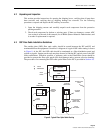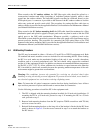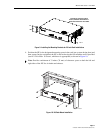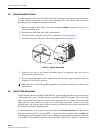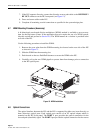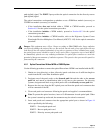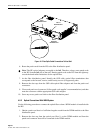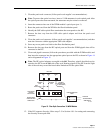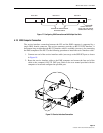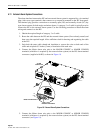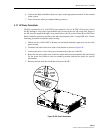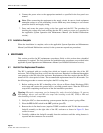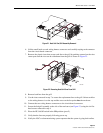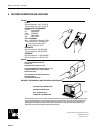
ADCP-75-169 • Issue 1 • June 2004
Page 22
© 2004, ADC Telecommunications, Inc.
6. Connect the power wires to the appropriate terminals as specified in the fuse panel user
manual.
7. Dress and secure the power wiring at the fuse panel and the HU. The procedure for
checking the voltage level and verifying that the HU is ready to power up is provided in
the applicable System Operation and Maintenance Manual (see Related Publications
section).
4.13 Installation Complete
When the installation is complete, refer to the applicable System Operation and Maintenance
Manual (see Related Publications section) for the system turn-up and test procedures.
5 MAINTENANCE
This section provides the HU maintenance procedures. Refer to this section when scheduled
maintenance is required. The fault isolation and troubleshooting procedures are provided in the
applicable System Operation and Maintenance Manual (see Related Publications section).
5.1 Host Unit Fan Replacement Procedure
The HU is equipped with two cooling fans which are located on the right side of the HU
enclosure. The cooling fans blow cool air into the enclosure. Heated air is exhausted through the
vent openings on the left side of the enclosure. Replacement of the fans requires that the HU be
turned off for a short period of time. The recommended replacement interval is 60 months. Use
the following procedure to remove and replace the HU cooling fans:
1. Before working on the HU or handling a fan, slip on an Electro-Static Discharge (ESD)
wrist strap and connect the ground wire to an earth ground source. Wear the ESD wrist
strap while completing each section of the fan installation procedure.
2. Notify the NOC or alarm monitoring system operator that the system is going offline.
3. Place the HU On/Off switch in the OFF position (press O).
4. Remove the six flat-head screws (requires TORX screwdriver with T10 bit) that secure the
fan/grill assembly to the right side of the HU enclosure as shown in Figure 21. Save
screws for reuse.
5. Carefully withdraw the fan/grill assembly from the enclosure until the wiring harness is
exposed and the connectors are accessible.
Note: When connecting the equipment to the supply circuit, be sure to check equipment
nameplate ratings to avoid overloading circuits which may cause damage to over-current
protection devices and supply wiring.
Warning: Electronic components can be damaged by static electrical discharge. To prevent
ESD damage, always wear an ESD wrist strap when working on the HU, STM, or LPA and
when handling electronic components.



